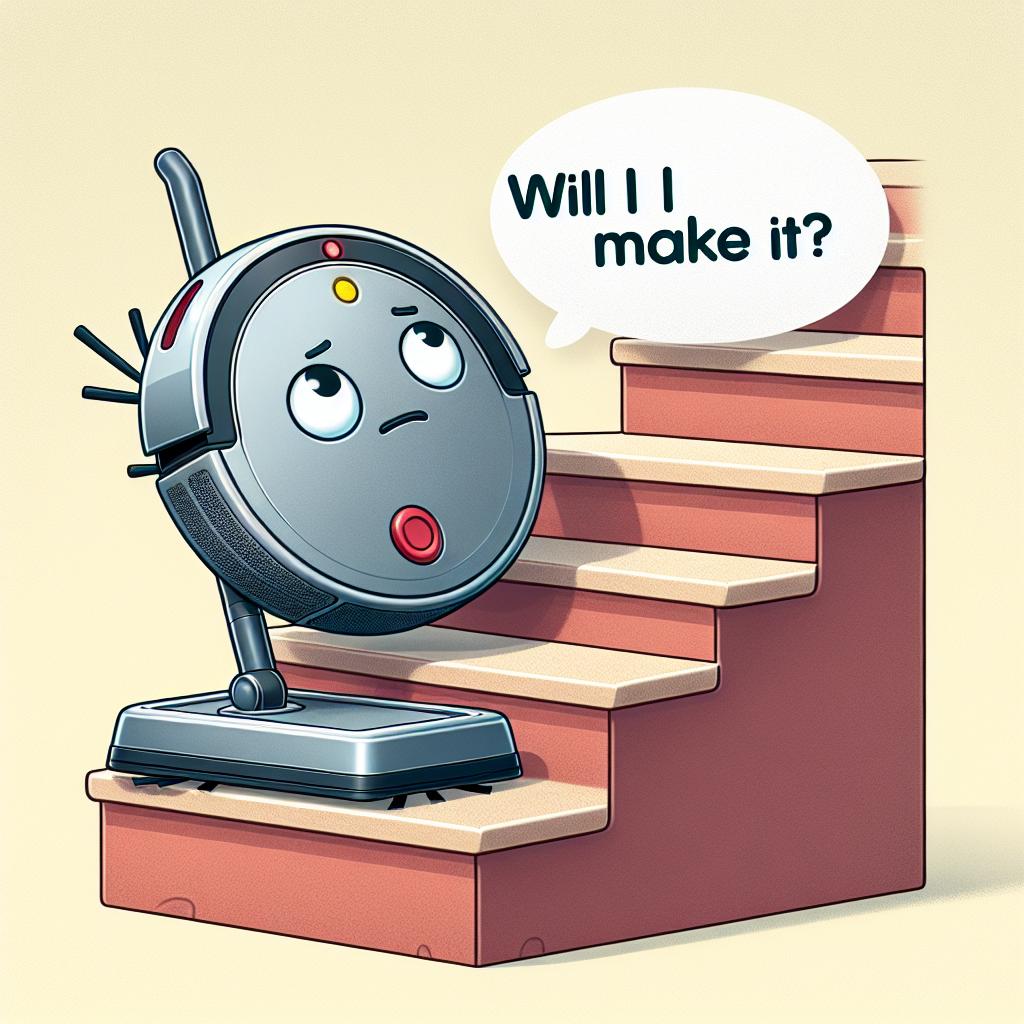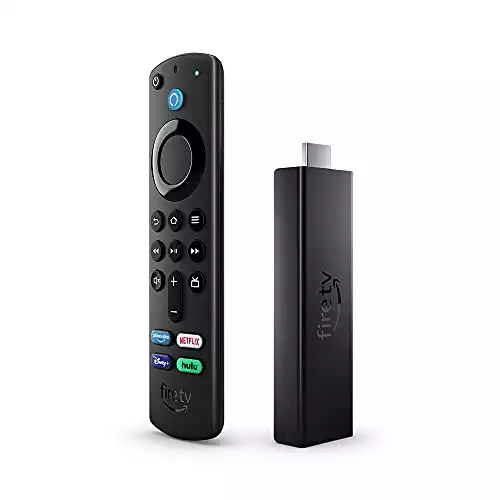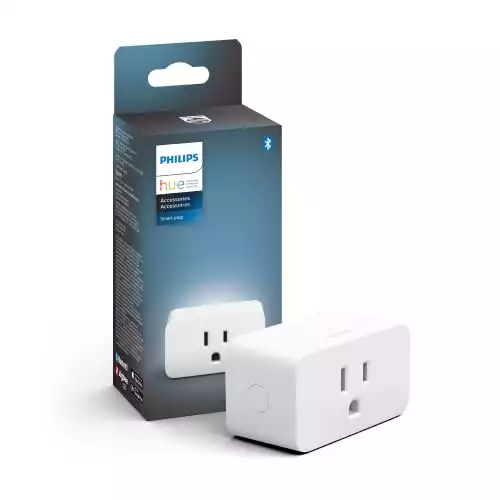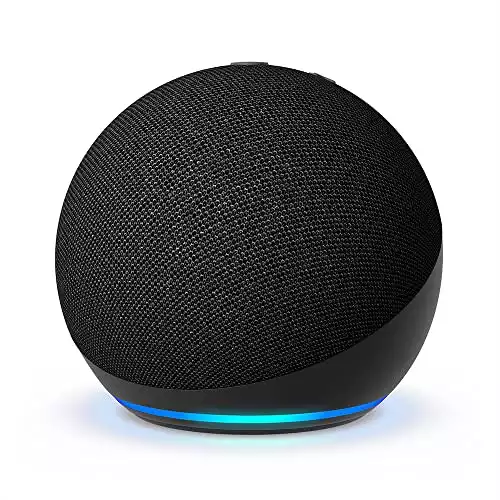This page may contain affiliate links. Please read my disclosure for more info.
Roombas are smart, but are they smart enough to protect themselves from a nasty fall? In this guide, we’ll look at how Roomba detects and avoids stairs and the steps you can take to keep your robot vacuum safe around stairs and other dropoffs.
Will Roomba Fall Down Stairs?
Roomba will not fall down your stairs because every Roomba model is equipped with cliff sensors. These infrared sensors are constantly searching for nearby dropoffs. When they find one, they guide Roomba to a safer location.
Even the very earliest Roomba models had cliff sensors, but the sensors themselves and the algorithms they use have improved a lot over the years. Early-generation Roombas would occasionally fail to see the existence or exact location of a staircase. However, newer models have virtually eliminated this problem.
How Do You Keep a Roomba From Falling Down Stairs?
Your Roomba should never fall down the stairs, assuming you maintain it properly. Mainly, this means keeping the cliff sensors in good condition. However, there are also a couple of extra Roomba tricks that you may need to try if Roomba has a hard time with the lighting or coloring around your staircase.
1. Clean Roomba’s cliff sensors
Any dirt or oil on the cliff sensors can interfere with their infrared signals. Fortunately, it’s easy to keep them clean. All you need is a Magic Eraser or similar melamine foam cleaning sponge.
Roombas have four cliff sensors, all found on the underside of the vacuum. Two of the sensors are on either side of the castor wheel (the spherical wheel near the front of the Roomba). The other two are near the ends of the front bumper on either side of the vacuum.
Make sure your sponge is clean and dry, and wipe the opening of each sensor. You should do this about once a month, potentially more often if your Roomba is encountering a lot of dirt and grime.
2. Avoid placing dark rugs near your stairs
Roomba cliff sensors have a hard time telling the difference between dark rugs and cliffs. It’s an unfortunate downside of relying on infrared sensors that don’t reflect properly off dark materials.
Older Roombas used to ignore any dark carpets or rugs. Newer Roombas have gotten better at recognizing when a perceived cliff is actually a rug.
Every once in a while, though, Roomba gets confused. When you place a dark rug or carpet too close to your stairs, Roomba may not see the transition. It will think the stairs are just an extension of the rug and tumble right over the edge.
The solution to this is simple, but it may not satisfy your taste in home decor. If you have a Roomba, don’t put any dark carpets or rugs within a few inches of the stairs.
3. Use keep-out zones and iRobot Virtual Walls
Newer models, including the Roomba i7 and s9, map out your home during their first cleaning run. Once the map is populated, you can designate keep-out zones in the iRobot app.
As the name implies, these zones tell your Roomba what areas it isn’t allowed to enter. They are especially useful around objects that you don’t want Roomba to bump into or suck up or for areas that could be hazardous to Roomba. If you think Roomba is getting too close to the stairs, just designate the stairs as a keep-out zone.
Older Roombas had much more limited mapping options. For the Roomba e5, i1, i3, i4, i5, or 500–900 series, your best alternative is iRobot Virtual Walls. These devices let you set up either a barrier or a circular region that Roomba will not enter.
And, if all else fails, you could just put up a physical barrier. Placing a piece of furniture or a gate in front of your stairs will prevent Roomba from getting too close to the edge. It’s like kid-proofing but for robots.
4. Replace broken sensors immediately
Without working cliff sensors, your Roomba is very likely to drive right off the edge of the stairs. That tumble could damage or completely break your favorite cleaning machine.
Visually inspect your Roomba’s sensors every time you clean them. If there’s any sign of damage, replace them ASAP. It’s a lot cheaper to swap out a sensor than it is to replace your Roomba after it does its best Humpty Dumpty impression.
The cliff sensors are not universally compatible across Roomba generations. When you buy replacement cliff sensors, make sure they are the appropriate type for your model of Roomba.
- Get these ones for the e5, e6, 600 series, 700 series, 800 series, and 900 series.
- Get these ones for the i1, i3, i4, and j7.
- Get these ones for the i6, i7, and i8.
Do Other Robot Vacuums Fall Down Stairs?
Most, if not all, robot vacuum brands use cliff sensors at this point. As long as you stick with a good brand like Roborock, Eufy, Roomba, or Shark, you shouldn’t have any problems with your Roomba falling down the stairs.
Aside from the cliff sensors, high-end robot vacuums tend to have mapping software similar with features similar to Roomba’s keep-out zones. While the Virtual Walls are unique to Roomba, other brands have their own proprietary barriers like Shark’s magnetic boundaries.
Can You Disable Roomba Cliff Sensors?
Roomba’s cliff sensors can be disabled, temporarily or permanently, by covering them with white paper. This will essentially give an all-clear signal to the infrared sensors, regardless of the nearby terrain.
I don’t recommend this generally, but there are rare cases where it can help. For those with lots of dark carpet and no stairs, the cliff sensors can be more annoying than useful. Just remember that you’re doing this at your own risk, so never cover the sensor of a Roomba if there is any chance it could take a fall.
What’s Next?
The cliff sensors are just one of the features that let you use Roomba in multiple-floor homes. Roomba’s other features and accessories help with everything from preventing stuck robot vacuums to enabling Roomba voice commands from Alexa. And these same features are also present on other iRobot products like the surprisingly useful Braava robot mop.
Of course, robot vacuums aren’t perfect (yet!). That’s why I’ve also devoted a lot of time to dealing with Roomba Wi-Fi connection problems and Shark charging problems. These guides exist to give you all the info you need to know your Roomba is charging, connected, and ready to go.
|
N/A
|
$34.99
|
$49.99
|

Zachary has spent 12 hears in the tech industry focusing on automation, analytics, and cybersecurity. His passion is tech education; he uses his industry expertise and STEM PhD to break down complicated concepts into simple step-by-step guides. When he’s not writing or coding, you can find him binging anything Star Trek or Marvel or reading far too many sci-fi novels.




